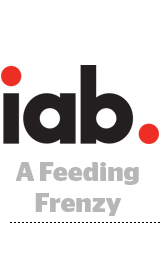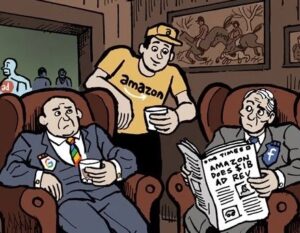As feeds become the new standard for web design, there’s a greater need to develop ad units that accommodate them.
Such was the thinking behind the IAB’s Wednesday release of specifications for three kinds of in-feed advertising channels: social feeds (notably sponsored Facebook or Twitter posts), product feeds (which encompass ecommerce sites like Amazon and Wal-Mart) and content feeds.
“Since feed-based ads represent the largest source of inventory within native, our goal with this playbook is to add more clarity to the three different types of feeds and the types of ads that work best,” said Dan Greenberg, Sharethrough CEO and co-chair of the IAB’s native advertising working group.
Unlike the working group’s previous specifications, those around in-feed units don’t provide any new technical distinctions or protocols. However, it still fits into the group’s mission statement because the native community feels it has reached a point where adoption hinges on knowledge, not new technology.
The fundamental problem is that achieving industrywide scale remains a concern for native advertising technology companies. While Facebook popularized news feed ads in 2012, “you still need standards in order to scale,” said Eddie de Guia, co-founder and managing director at PubNative.
Initially, industry observers thought concerns over serving sponsored content that looked like editorial would inhibit adoption – a somewhat illusory issue, it turns out. Instead, ad buyers have been hung up because “they need a framework to talk about native and understand it,” said David Kurtz, SVP of product strategy at Opera Mediaworks.
According to Kurtz, “what the IAB is doing is really codifying the types of placements that will work in these environments. … So marketers can create the right kind of content and be sure it’s going to the right place.”
Jonathan Opdyke, CEO at HookLogic, a performance marketer that specializes in native ads for product feeds, said the new standards are “clear and intuitive.” Opdyke also emphasized that the announcement is more about setting guidelines for best practices, echoing other industry insiders who see education as a more pressing concern than technology or creative content.
For instance, the same unit can work across feeds and channels, but in order to feel comfortable spending on native, Opdyke said marketers have to grasp that “product feeds are oriented to direct marketing goals. … And content feeds are for publishers wishing to drive traffic or brands who want to build or reinforce a story.”
Social remains the most dominant channel within feed formats – and across all native advertising. Facebook, for example, brought in more money from traditional ads than native in 2013, but this year native will account for three times more than its revenue from traditional ads (and will be six times more by 2018).
“[Facebook] can move markets and create expectations,” said Ari Lewine, co-founder and CSO at TripleLift, a native programmatic exchange. For instance, Facebook habituated users to autoplay video ads – a strictly verboten practice for marketers before Facebook normalized it.
Facebook’s success with in-feed units consequently “creates massive demand on the publisher side to have a unique ad format,” said Lewine. The IAB and many in the native tech space assume product and content feeds have been slower to gain traction since marketers don’t understand what those types of native units are for.
Lewine was not the only person to point to Facebook’s digital video trailblazing. Kurtz claimed that efforts like this from the IAB are similar to what he saw sellers do when Facebook started to clear a path for autoplay video.
“It gave [digital video providers] a reason to go out to the agencies and brands and teach them how video worked, how the creative needed to change to fit the environment, what best practices looked like,” Kurtz said.
There is an intuitive contradiction that has hung over native for the past three years: How do ads designed to fit the specific tone and environment of each individual publisher or online store scale programmatically?
“Being able to scale is an integral part of it,” said Lewine. “Native without scale is simply a custom ad.”
Having achieved technical standardization in the form of OpenRTB2.3 units, native leaders are now looking to scale in the next most important category: what brands and agencies believe they can accomplish.













